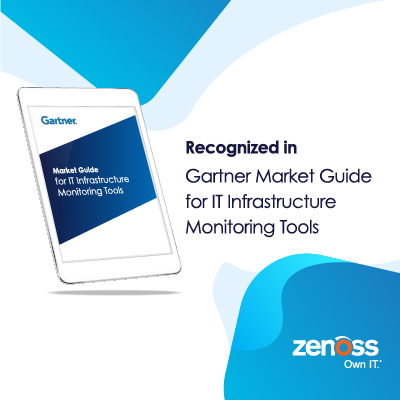
1. “Select monitoring tools to meet business needs by identifying the must-have metrics the ITIM tool can provide and addressing visibility gaps through different tooling categories like APM and NPMD.”
When setting up a monitoring platform, there is always a balancing act between identifying what’s “neat to know” vs. what’s “need to know.” Go too far in one direction, and an IT team can find themselves saddled with an unwieldy stack of monitoring tools and a huge software bill. Go too far in the other direction, and they’ll end up with IT blind spots that will prevent them from seeing the next big outage before it comes. The trick lies in finding the right balance of solutions that provide both a broad view of the important health indicators and a deep view into the details that matter without breaking the bank (or the souls of your monitoring team).
2. “Contextualize data that ITIM tools collect from highly modular IT architectures by using AIOps to manage other sources, such as observability metrics from cloud-native monitoring tools.”
Gartner predicts that by 2023, 60% of ITIM solution purchases will factor in a desire for advanced analytics, so AIOps capabilities have become a key differentiator among ITIM vendors. AIOps solutions can be very adept at contextualizing large volumes of data so that IT teams can take definitive actions to optimize the performance of their applications. There are only a small handful of vendors recognized by Gartner for their capabilities as both ITIM and AIOps vendors (and Zenoss is one of them).
3. “Improve data exchange by favoring ITIM tools that offer better integration and interoperability with broader ITOM tools like ITSM, AIOps and automation.”
A Zenoss customer I spoke to recently told me that one of the most valuable capabilities of our product for his team is its ability to efficiently route trouble reports directly to the person best equipped to handle them. Instead of peppering the entire team with hundreds of email notifications whenever something isn’t working correctly (as their prior solution used to do), Zenoss’ native integration with their ServiceNow ticketing system enables targeted notifications specifically to the person most accountable for the resolution of the problem. The immediate reduction in overhead across the team enables this client to pursue intelligent automation so issues can not only be routed correctly but also solved automatically.
4. “Reduce tool management overhead by shortlisting vendors that offer modern user interfaces, support cloud-native architectures and address DevOps monitoring needs.”
Modern cloud-native IT architectures deserve modern solutions that address the monitoring needs of a wide variety of roles within the organization, from the network administrator to the cloud architect to the DevOps engineer. A monitoring interface must be pliable enough to enable different players in an incident response team to visualize the infrastructure in ways that make the most sense to them. Zenoss Cloud is built to enable modern views of infrastructure relationships, device metrics, application streaming data and more across both on-premises and cloud resources, enabling everyone from the application engineer to the cloud administrator to get a dynamic view of their slice of the data.
5. “Enhance the decision making of non-IT teams by providing dashboards customized with insights relevant to different personas like CIOs, application developers and business leaders.”
Due to the ever-increasing criticality of IT services to deliver strong business results, the health of an organization’s IT infrastructure has become more interesting to a larger cast of key stakeholders. As a result, executive and non-IT stakeholders are asking for help understanding how to make sense of all of the operational data coming from their IT. Zenoss lets these stakeholders customize their view of data to the most critical or interesting pieces and surrounds those pieces with the appropriate context so they can easily understand the business impact of whatever may be happening. As you evaluate solutions for the IT monitoring challenges in your organization, you should, of course, shortlist vendors that properly address these recommendations. But it may also be helpful to cross-check with other adjacent spaces, such as intelligent application and service monitoring or AIOps, to see how leaders in those areas stack up. Zenoss is one of only a small handful of solution providers that was named a Representative Vendor in both the Gartner Market Guide for IT Infrastructure Monitoring Tools and the Gartner Market Guide for AIOps Platforms as well as a Leader in The Forrester Wave™: Intelligent Application and Service Monitoring, Q2 2019. If you’re interested in learning more about how Zenoss Cloud can set up your organization to be ready as IT monitoring transforms, request a demo today. Gartner Disclaimer Gartner does not endorse any vendor, product or service depicted in its research publications, and does not advise technology users to select only those vendors with the highest ratings or other designation. Gartner research publications consist of the opinions of Gartner’s research organization and should not be construed as statements of fact. Gartner disclaims all warranties, expressed or implied, with respect to this research, including any warranties of merchantability or fitness for a particular purpose.







